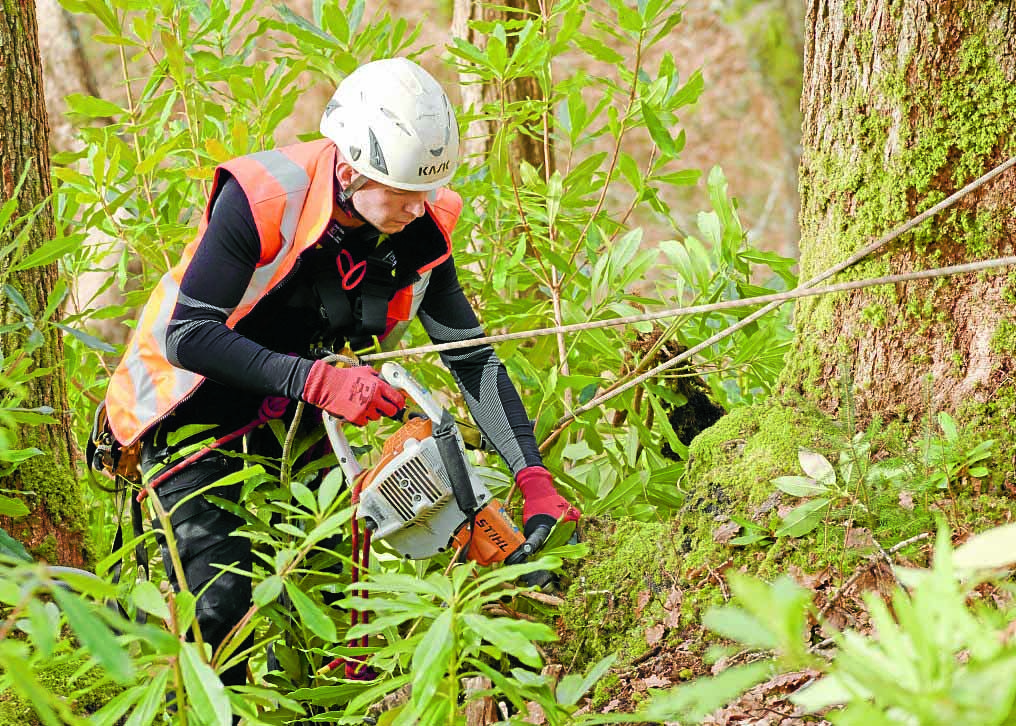‘SIGNIFICANT’ efforts are being made by Forestry Land Scotland (FLS) to control invasive species in the forestry estate in this region.
They are tackling the spread of Salal (Gaultheria shallon) and American Skunk Cabbage (Lysichiton americanus), both of which are a particular menace in Dumfries and Galloway.
An evergreen member of the heather family of plants, Gaultheria was originally brought from North America, cultivated in the 1800s and planted as cover for gamebirds such as grouse.
In recent years it has become highly invasive on sites formally occupied by rhododendron, where it regenerates rapidly after clearance.
American skunk cabbage is most often found on pond margins, stream sides, bogs and in wet woodlands. Tall with huge leathery leaves and bright yellow ‘flowers’ resembling those of a British native plant – Cuckoo-pint or Lords and Ladies – it gradually escaped into the wild and has now become problematic.
Perhaps the best-known invader is Rhododendron ponticum, which reduces the biodiversity value and quality of soils it grows in.
Notoriously difficult to eradicate successfully, it is toxic to many species and physically reduces the presence of native ground flora and interrupts natural regeneration of woodland.
FLS are using drones to help map the best areas to focus removal efforts on, as well as controlling via the careful application of approved herbicides; and hand pulling small plants.
Environment manager Colin Edwards said: “Many of these alien species are threatening Scotland’s biodiversity including some of our unique and most precious rainforests.
“These invasive plant and animal species are also notoriously difficult to eradicate and achieving lasting success requires a co-ordinated approach, working with like-minded land managers, often at a landscape scale.
“There are things that everyone can do to help, for example by participating in volunteer schemes that support landscape scale control of invasive plants and animals.”
























